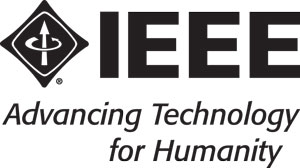Split, Croatia
"Julia is a high-level, high-performance dynamic programming language for technical computing, with syntax that is familiar to users of other technical computing environments. It provides a sophisticated compiler, distributed parallel execution, numerical accuracy, and an extensive mathematical function library. Julia’s Base library, largely written in Julia itself, also integrates mature, best-of-breed open source C and Fortran libraries for linear algebra, random number generation, signal processing, and string processing. In addition, the Julia developer community is contributing a number of external packages through Julia’s built-in package manager at a rapid pace. IJulia, a collaboration between the IPython and Julia communities, provides a powerful browser-based graphical notebook interface to Julia. Julia programs are organized around multiple dispatch; by defining functions and overloading them for different combinations of argument types, which can also be user-defined." (from http://julialang.org )
In this tutorial we will cover basics of Julia principles and usage, and answer the two crucial questions: What is Julia good for? And What is Julia not good for (yet)?
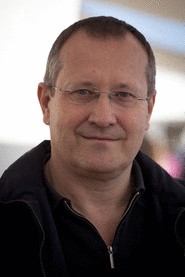 |
Ivan Slapnicar was born on 13 July 1961. He received his BSc in 1984, his MSc in 1988 in Mathematics from the University of Zagreb, Croatia, and PhD (dr. rer. nat.) in Mathematics in 1992 from the Fernuniversität Hagen, Germany, with summa cum laude. He is Professor and Head of the Chair for Mathematics at the Faculty of Electrical Engineering, Mechanical Engineering and Naval Architecture at the University of Split. His research interests include linear algebra, numerical linear algebra and applications. |
| Professor Slapnicar was Visiting Professor at the Utah State University in 2001/02, Visiting Researcher at TU Berlin with the FP7 People "Marie Curie" Intra-European Fellowship in 2009/10, and Fulbright-Schuman International Educator/Lecturer at MIT in 2014, where he worked closely with the Julia group. To date Professor Slapnicar has published more than 20 journal papers in the area of opertor theory, linear algebra, numerical linear algebra and applications and was PI in several national scientific grants. | |
Rennes, France
Rennes, France
Within the wide landscape of signal processing techniques for wireless communications, Time Reversal (TR) is today considered as one of the very promising strategies for green communications and multiuser multiplexing in particular thanks to its good spatial and temporal focusing properties. Firstly introduced for ultrasound and underwater acoustic waves, TR has more recently been applied to electromagnetic waves in the context of wireless communications. TR turns out to be a simple and efficient prefiltering technique suitable for low power transmissions, multiple user discrimination and also leads to lowcomplexity receivers. In this tutorial, we intend to provide a comprehensive and indepth overview on the TR paradigm, from theoretical aspects to practical issues. We will first give the necessary background to understand the physical nature of the TR concept, based on wave propagation and Maxwell theory, and will then give and discuss the analytical and simulation tools that have to be used from a digital communication and signal processing point of view in order to quantify the performance of TR, both in terms of system capacity and bit error rate. On this basis, a critical analysis of the state of the art of TR for wireless communications will be exposed, from UWB (Ultra Wideband) systems to multiantenna narrow band systems. We will address various system architectures from a low to a large number of transmit antennas and for singleuser and multipleuser transmission scenarios. Throughout this tutorial, we will be giving the latest insights on TR, highlighting the interrelations or the possible hybridizations with other very popular schemes such as multicarrier modulations, multiple antenna systems, beamforming or spatial multiplexing, and massive or large scale antenna systems. We will provide all the material to better understand the potential of TR in the perspective of the design of future wireless communication networks. The session will end with the presentation of a proof of concept study, exhibiting the technical challenges for the implementation of TRbased schemes in real systems.
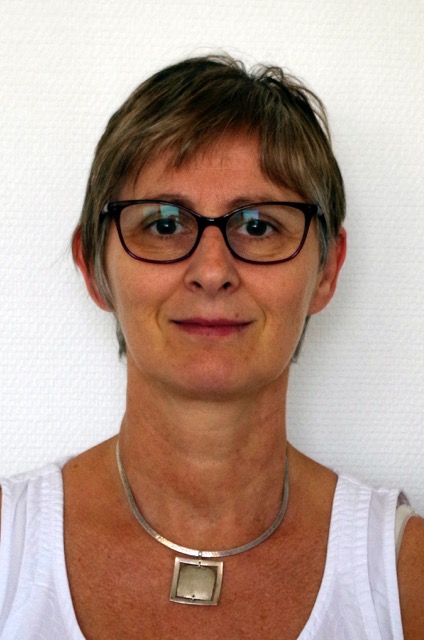 |
Maryline Hélard received the PhD degrees from INSA (National Institute of Applied Sciences) of Rennes and the Habilitation degree from Rennes 1 University in 1884 and 2004 respectively. In 1985, she joined France Telecom Research Laboratory as a research engineer and in 1991 she started carrying out physical layer studies in the field of digital television and wireless communications. In 2007, she joined INSA as a Professor and is currently the codirector of the Communication Department at IETR (Electronics and Telecommunications Institute of Rennes). In 2013, she became a research fellow at IRT (Institut de Recherche Technologique) Bcom. |
| She holds 25 patents and has published more than 30 journal papers and 100 peerreviewed conference papers. Her current research interests are in the areas of digital communications such as equalization, synchronization, iterative processing, OFDM, MCCDMA, channel estimation, and MIMO techniques applied to wireless communications as well as ADSL and optical systems. She was involved in several French and European collaborative research projects and participated for the European commission to the selection of research projects. She works as reviewer and chair for numerous international conferences. She has been general Chair of the IEEEsponsored IWCLD 2011 and in the steering committee of IWCLD 2013. She has been a guest editor for IEEE Vehicular Technology Magazine in 2014. | |
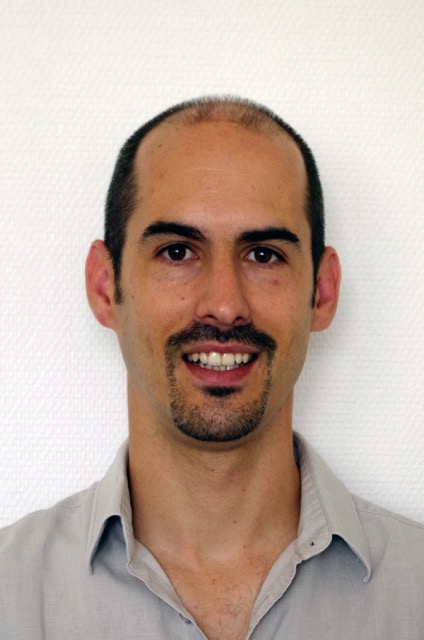 |
Matthieu Crussière received the Ph.D. degree in electrical engineering from the National Institute of Applied Sciences (INSA), Rennes, France, in 2005. He then joined the Department of Telecommunications and Electronic Engineering at INSA as an Associate Professor and was involved in the Digital Communication Department of the Electronics and Telecommunications Institute of Rennes (IETR), France. In 2013, he became a research fellow at the Institute of Research and Technology (IRT) BCOM in Rennes. His main research interests lie in digital communications and signal processing techniques. |
| His first works were focused on the optimization of highbit rate powerline communications using hybrid multicarrier and spreadspectrum waveforms. These last years, his research activities have been dedicated to adaptive resource allocation, crosslayer mechanism and system design in the context of multicarrier and multiple antenna systems. He is author or coauthor of more than 80 technical papers in international conferences and journals. He was involved in several European and French national research projects in the field of powerline communications, broadcasting systems, ultra wideband and mobile radio communications. He has been involved in the technical program committee of different IEEE conferences, including ICT, PIMRC and VTC. He was TPC chair and coorganizer of the 3rd IWCLD workshop, cosponsored by IEEE. | |
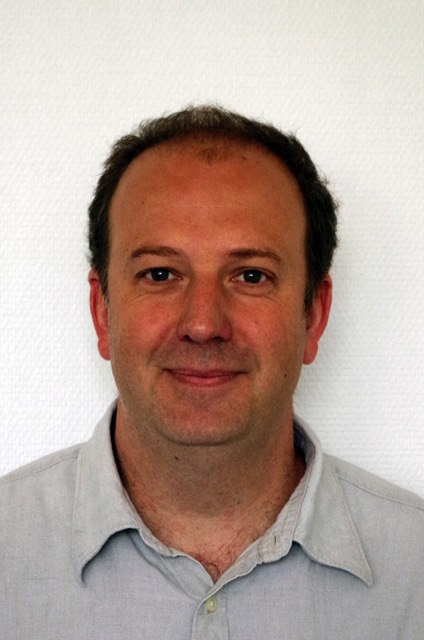 |
Jean-Christophe Prévotet obtained his Phd in 2003 from the Pierre et Marie Curie University. He is currently an associate professor at IETR/INSA de Rennes. His major interests are embedded and reconfigurable systems and real time systems in general. In particular, his applicative subjects deal with communication systems and the way to optimize their architecture onto real platform. He is also deeply involved in the real time management of these communication platforms under the supervision of an embedded operating system. |
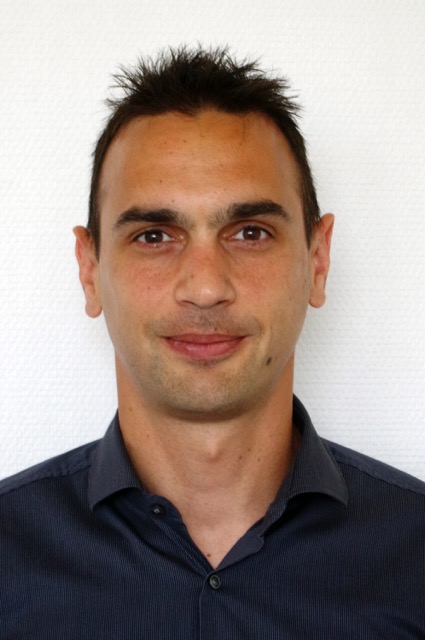 |
Yvan Kokar received the Master’s degree in Engineering from the Montpellier university graduate engineering school, Montpellier, France, in 2004. In 2006, he joined the Electronics and Telecommunications Institute of Rennes (IETR) Laboratory, INSA, as a Research Engineer. His research interests lie at the intersection of communication theory, wireless networks and their implementation through hardware and software defined. He was involved in several partnership projects with industry and academia. Recently, he was in charge of the prototype development in the framework of the French research project ANRTRIMARAN dealing with TR techniques combined with OFDM. |
Split, Croatia
The presentation starts with some general aspects of numerical modeling in electromagnetics
and EMC. The introductory part deals with some commonly used analytical and numerical methods.
First, a crash-course on the theory of wire antennas and related numerical methods for solving
the integral equations in both frequency and time domain will be discussed. Applications pertaining to
dipoles, Yagi-Uda arrays and logarithmic-periodic dipole antennas (LPDA) will be given and followed
with some illustrative computational examples.
Furthermore, full wave (antenna) models for various thin wire structures, from rather simple to
realistic complex geometries, will be presented. This will be followed by studies of realistic antenna
systems for air traffic control and ground penetrating radar (GPR) applications, overhead and buried
transmission lines, respectively, which will be carried out using both rigorous full wave models and
approximate transmission line (TL) approach. Particular attention will be focused to the analysis of
PLC (Power Line Communications) configurations and modeling of lightning channel. The transient
analysis of realistic grounding systems, with particular emphasis to wind turbines, will be undertaken,
as well.
Then presentation will also deal with human exposure to non-ionizing electromagnetic fields.
Low frequency, frequency and transient exposures related to possible adverse health effects will be
outlined. Also, some biomedical application of electromagnetic fields, with particular emphasis on
transcranial magnetic stimulation (TMS), will be covered.
Furthermore some stochastic analysis methods applied to area of GPR and human exposure to
electromagnetic fields will be presented.
The presentation will end up with some topics in magnetohydrodynamics related to the
modeling of fusion related phenomena.
 |
Dragan Poljak was born on 10 October 1965. He received his BSc in 1990, his MSc in 1994 and PhD in electrical engineering in 1996 from the University of Split, Croatia. He is the Full Professor at Department of Electronics, Faculty of electrical engineering, mechanical engineering and naval architecture at the University of Split, and he is also Adjunct Professor at Wessex Institute of Technology. His research interests include frequency and time domain computational methods in electromagnetics, particularly in the numerical modelling of wire antenna structures, and numerical modelling applied to environmental aspects of electromagnetic fields. |
|
To date Professor Poljak has
published nearly 200 journal and conference papers in the area of computational electromagnetics,
seven authored books and one edited book, by WIT Press, Southampton-Boston., and one book by
Wiley, New Jersey. Professor Poljak is a member of IEEE, a member of the Editorial Board of the
journal Engineering Analysis with Boundary Elements, and co-chairman of many WIT International
Conferences. He is also editor of the WIT Press Series Advances in Electrical Engineering and
Electromagnetics. In June 2004, professor Poljak was awarded by the National Prize for Science. In
2013 he was awarded by the Nikola Tesla Prize for achievements in Technical Sciences. In 2011 professor Poljak became a member of WIT Bord of Directors and the Vice-dean for research at the Faculty of electrical engineering, mechanical engineering and naval architecture. In June 2013 professor Poljak became a member of the board of the Croatian Science Foundation. |
|
Nottingham, UK
Near field measurement and modelling techniques for electronic equipment have been developed for many years. The complexity of modern electronics now requires a statistical approach. Efficient modelling tools for describing noisy electromagnetic fields in complex environments is paramount for tackling the development of the next generation of integrated circuits and chip architectures. C2C communication and wireless links between printed circuit boards operating as Multiple Input Multiple Output (MIMO) devices will become dominant features overcoming the information bottleneck due to wired connections. Designing the architecture of these wireless C2C networks will challenge standard engineering design tools. Device modelling and chip optimization procedures need to be fundamentally based on the underlying physics for determining the electromagnetic fields, the noise models and complex interference pattern. In addition, the input signals of modern communication systems are modulated, coded, noisy and eventually disturbed by other signals and thus extremely complex. To simulate the reaction of complex wireless C2C elements, new electromagnetic field simulation techniques are needed to describe a realistic system response for the development of future communication circuits, chips and systems. This presentation will review recent advances both in near field scanning of stochastic electromagnetic fields the characterisation of which will make possible to deliver the breakthroughs necessary to enable this future emerging technologies. New insight in wave modelling in complex environments based on dynamical systems theory and random matrix theory make it possible to envisage wireless communication on a chip level. This opens completely new pathways for chip design, for carrier frequency ranges as well as for energy efficiency and miniaturisation, which will shape the electronic consumer market in the 21st century and worldwide.
 |
Dave Thomas is a Professor of Electromagnetics Applications and Director of The George Green Institute for Electromagnetics Research, The University of Nottingham UK. His research interests are in electromagnetic compatibility, electromagnetic simulation, power system transients and power system protection with a particular interest in stochastic fields and uncertainty in electromagnetics. He is a member of CIGRE and convenor for Joint Working Group C4.31 “EMC between communication circuits and power systems”. |
| He is also Chair for the IEEE EMC Technical committee T7 on Low Frequency EMC, Chair of COST Action IC 1407 “Advanced Characterisation and Classification of Radiated Emissions in Densely Integrated Technologies (ACCREDIT)” and a member of the EMC Europe International Steering Committee. | |
Emerging Internet Quality of Service (QoS) mechanisms are expected to enable wide spread use of real time services such as VoIP and videoconferencing. The "best effort" Internet delivery cannot be used for the new multimedia applications. New technologies and new standards are necessary to offer Quality of Service (QoS) for these multimedia applications. Therefore new communication architectures integrate mechanisms allowing guaranteed QoS services as well as high rate communications.
The service level agreement with a mobile Internet user is hard to satisfy, since there may not be enough resources available in some parts of the network the mobile user is moving into. The emerging Internet QoS architectures, differentiated services and integrated services, do not consider user mobility. QoS mechanisms enforce a differentiated sharing of bandwidth among services and users. Thus, there must be mechanisms available to identify traffic flows with different QoS parameters, and to make it possible to charge the users based on requested quality. The integration of fixed and mobile wireless access into IP networks presents a cost effective and efficient way to provide seamless end-to-end connectivity and ubiquitous access in a market where the demand for mobile Internet services has grown rapidly and predicted to generate billions of dollars in revenue.
This tutorial covers to the issues of QoS provisioning in heterogeneous networks and Internet access over future wireless networks. It discusses the characteristics of the Internet, mobility and QoS provisioning in wireless and mobile IP networks. This tutorial also covers routing, security, baseline architecture of the inter-networking protocols and end to end traffic management issues.
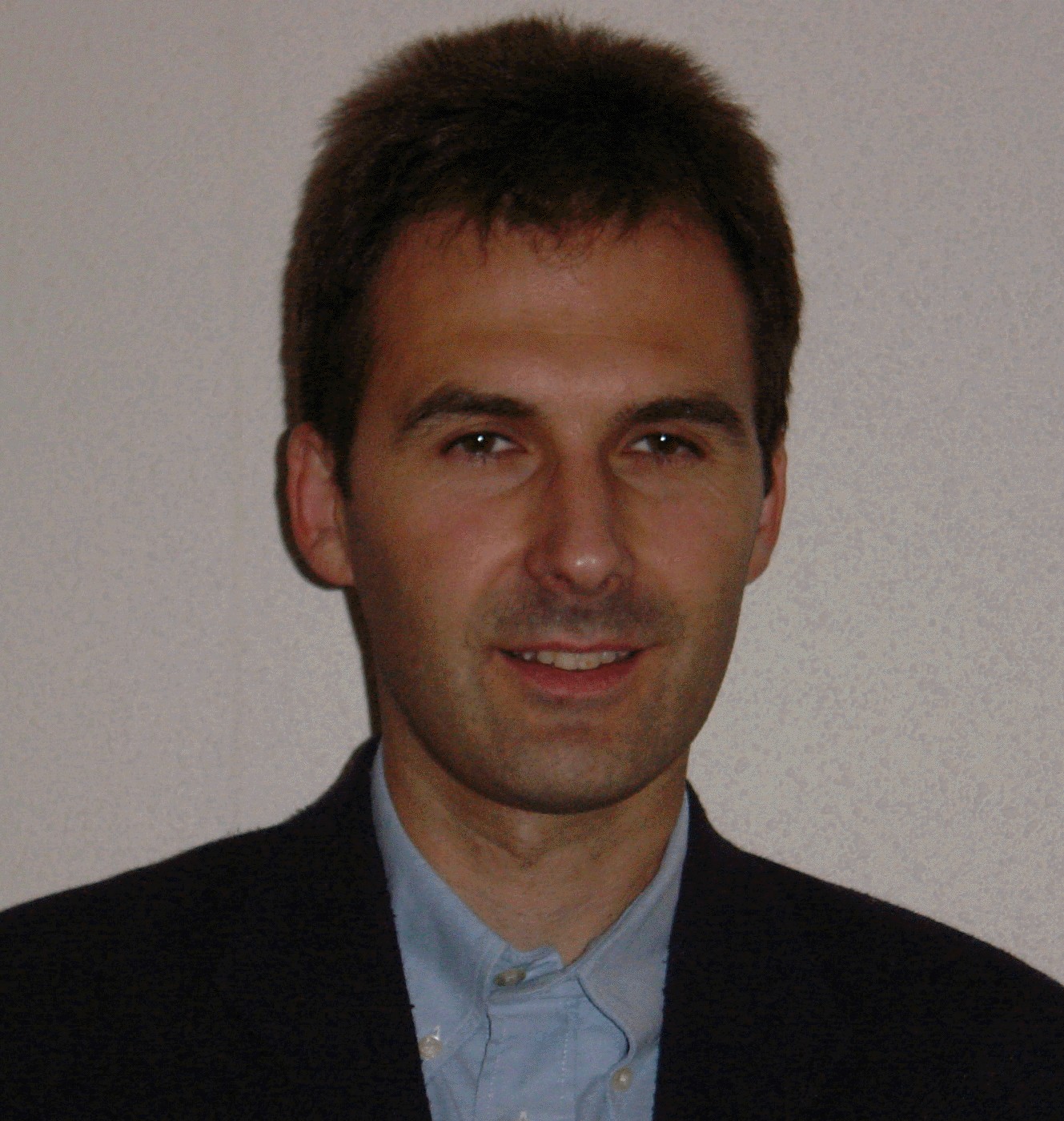 |
Pascal Lorenz (lorenz@ieee.org) received his M.Sc. (1990) and Ph.D. (1994) from the University of Nancy, France. Between 1990 and 1995 he was a research engineer at WorldFIP Europe and at Alcatel-Alsthom. He is a professor at the University of Haute-Alsace, France, since 1995. His research interests include QoS, wireless networks and high-speed networks. He is the author/co-author of 3 books, 3 patents and 200 international publications in refereed journals and conferences. |
|
He was Technical Editor of the IEEE Communications Magazine Editorial Board (2000-2006), Chair of Vertical Issues in Communication Systems Technical Committee Cluster (2008-2009), Chair of the Communications Systems Integration and Modeling Technical Committee (2003-2009) and Chair of the Communications Software Technical Committee (2008-2010). He has served as Co-Program Chair of IEEE WCNC'2012, ICC'2004 and ICC'2017, tutorial chair of VTC'2013 Spring and WCNC'2010, track chair of PIMRC'2012, symposium Co-Chair at Globecom 2007-2011, ICC 2008-2010, ICC'2014 and '2016. He has served as Co-Guest Editor for special issues of IEEE Communications Magazine, Networks Magazine, Wireless Communications Magazine, Telecommunications Systems and LNCS. He is associate Editor for International Journal of Communication Systems (IJCS-Wiley), Journal on Security and Communication Networks (SCN-Wiley) and International Journal of Business Data Communications and Networking, Journal of Network and Computer Applications (JNCA-Elsevier). He is senior member of the IEEE, IARIA fellow and member of many international program committees. He has organized many conferences, chaired several technical sessions and gave tutorials at major international conferences. He was IEEE ComSoc Distinguished Lecturer Tour during 2013-2014. |
|
